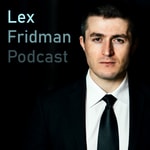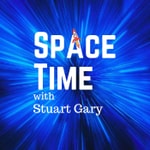Orbital Path – Détails, épisodes et analyse
Détails du podcast
Informations techniques et générales issues du flux RSS du podcast.


Astronomer Michelle Thaller takes a look at the big questions of the cosmos and what the answers can reveal about life here on Earth. From podcast powerhouse PRX, with support from the Sloan Foundation.
Classements récents
Dernières positions dans les classements Apple Podcasts et Spotify.
Apple Podcasts
🇺🇸 États-Unis - naturalSciences
22/07/2025#84🇨🇦 Canada - naturalSciences
12/07/2025#91🇨🇦 Canada - naturalSciences
11/07/2025#71🇨🇦 Canada - naturalSciences
10/07/2025#55🇨🇦 Canada - naturalSciences
09/07/2025#38🇺🇸 États-Unis - naturalSciences
01/07/2025#100🇺🇸 États-Unis - naturalSciences
23/06/2025#86🇺🇸 États-Unis - naturalSciences
22/06/2025#69🇺🇸 États-Unis - naturalSciences
21/06/2025#99🇺🇸 États-Unis - naturalSciences
20/06/2025#72
Spotify
Aucun classement récent disponible
Liens partagés entre épisodes et podcasts
Liens présents dans les descriptions d'épisodes et autres podcasts les utilisant également.
See allQualité et score du flux RSS
Évaluation technique de la qualité et de la structure du flux RSS.
See allScore global : 59%
Historique des publications
Répartition mensuelle des publications d'épisodes au fil des années.
Building 29
vendredi 21 décembre 2018 • Durée 31:05
All things in the cosmos have a lifespan, from the smallest particles to the most ancient suns. Everything has its season. Every season must come to an end.
And this episode marks the end of Orbital Path.
So, for the last transit of our podcast, Dr. Michelle Thaller and producer David Schulman join NASA astrobiologist Dr. Jen Eigenbrode on a site visit to one of Michelle’s very favorite places at Goddard Space Flight Center. It’s building 29, where NASA builds and tests spacecraft in some of the most extreme conditions found anywhere on earth.
Orbital Path is produced by David Schulman.
Our editor is Andrea Mustain. Production oversight by John Barth and Genevieve Sponsler. Hosted by Michelle Thaller.
Support for Orbital Path is provided by the Alfred P. Sloan Foundation, enhancing public understanding of science, technology, and economic performance.
Image credit: NASA
Hello, Asteroid!
vendredi 30 novembre 2018 • Durée 20:44
Asteroids, as the dinosaurs found out, can have big effects on life on Earth.
Sixty-five million years ago, an asteroid crashed into the Yucatán. The impact caused apocalyptic tsunamis and volcanic eruptions. Grit and ash blotted out the sun. It wiped out species that had roamed the Earth for millions of years.
Yet asteroid hits also were critical to the origins of life on Earth. Asteroids may well have been the bringers of water, of carbon, even of amino acids — the building blocks of life.
That’s a big reason why NASA is on a mission to Bennu. This asteroid is like an ancient fossil of our solar system — largely unchanged since the time the planets formed.
In December, after a billion-mile journey, NASA’s Osiris-Rex mission arrives at Bennu. And, for the first time, a spacecraft will try to actually bring back an asteroid sample to Earth.
On this episode of Orbital Path, Dr. Michelle Thaller sits down with Dr. Amy Simon — a senior scientist at NASA’s Goddard Space Flight Center, and a key player on the Osiris-Rex mission. Michelle and Amy talk about the mission, Amy’s work to probe the origins of the solar system, and one other thing:
The remote chance that Bennu, someday, could collide with Earth.
Orbital Path is produced by David Schulman.
Our editor is Andrea Mustain. Production oversight by John Barth and Genevieve Sponsler.
Support for Orbital Path is provided by the Alfred P. Sloan Foundation, enhancing public understanding of science, technology, and economic performance.
Image credit: NASA/Goddard/University of Arizona.
Star Death Tango
vendredi 9 février 2018 • Durée 24:09
On August 17, 2017, an alert went out.
Gravitational wave detectors in Louisiana and Washington state had detected a disturbance from deep space.
The effect was subtle — these detectors and a sister site in Italy measure disturbances smaller than a proton. But the evidence was dramatic. And the story they told was truly cataclysmic:
A pair of neutron stars had spiraled to their deaths.
That apocalyptic collision of two super-dense stars bent the very fabric of space time — just as Einstein had predicted. It sent Gamma rays out into deep space. It created an immense cloud of gaseous gold.
And, 130 million years later, astronomers on earth witnessed the final 100 seconds of these two stars’ dance of death. It’s taught us where gold came from, and helped humans understand other intractable mysteries of the universe.
In this episode of Orbital Path, Dr. Michelle Thaller speaks with two astronomers who watched this cosmic death tango from the best seats in the house.
We’ll hear from Dr. Vicky Kalogera. She’s Director of CIERA — the Center of Interdisciplinary Exploration and Research in Astrophysics at Northwestern University. Kalogera was a lead author on a journal article on the neutron star collision co-authored by close to 4,000 scientists.
We’ll also hear from physicist Mike Landry. He’s Head of LIGO Hanford — one of the sites that, in collaboration with Italy’s VIRGO detector, measured the neutron stars’ characteristic gravitational waves.
Orbital Path is produced by David Schulman. The program is edited by Andrea Mustain. Production oversight by John Barth and Genevieve Sponsler. Hosted by Dr. Michelle Thaller.
Support for Orbital Path is provided by the Alfred P. Sloan Foundation, enhancing public understanding of science, technology, and economic performance. More at sloan.org
Image credit: CALTECH/NSF/LIGO Sonoma State University/A. Simonnet
Neutron star audio chirp credit: LIGO/University of Oregon/Ben Farr
Ozone Disaster Redux
vendredi 26 janvier 2018 • Durée 20:01
Scientists in 1985 discovered something that threatened the world we live in:
The ozone layer had a hole in it.
A big one. And this hole was growing very quickly. If it continued to grow, the consequences would be dire.
Presented with the science, world leaders came up with an international agreement. The Montreal Protocol, as the treaty was called, may elicit shrugs today. But it staved off disaster for Earth. It was a remarkable success story, and our planet today would be a very different place if not for the Montreal Protocol and the so-called “blue sky” scientific research — research for curiosity’s sake — that led to the discovery of the rapid deterioration of the ozone layer, and its causes
In this episode, we return to a program originally broadcast in January 2017 — one that is perhaps even more relevant today.
Orbital Path is from PRX and produced by David Schulman. Justin O’Neill produced this episode. Orbital Path is edited by Andrea Mustain, with production oversight by John Barth and Genevieve Sponsler. Hosted by Dr. Michelle Thaller.
Support for Orbital Path is provided by the Alfred P. Sloan Foundation, enhancing public understanding of science, technology, and economic performance.
Fireside Physics: A Solstice on Saturn?
vendredi 29 décembre 2017 • Durée 17:00
In this darkest season of the year, Dr. Michelle Thaller and NASA astronomer Andrew Booth curl up by the fire. Gazing into the embers, red wine in hand, they consider the meaning of the winter solstice — on other planets.
Like Uranus, where parts of the planet go 42 earth years without seeing the sun. Or Mars, where winters are made colder by an orbit politely described as “eccentric.” Or Saturn — where winter’s chill is deepened by the shadow of the planet’s luminous rings.
Marshmallow, anyone?
Orbital Path is produced by David Schulman. The program is edited by Andrea Mustain. Production oversight by John Barth and Genevieve Sponsler. Hosted by Dr. Michelle Thaller.
Photo credit: NASA
From Another Star
vendredi 15 décembre 2017 • Durée 16:14
NASA’S office of planetary defense isn’t worried about Klingons or Amoeboid Zingatularians.
They worry about asteroids and comets.
Like the one that exploded over Chelyabinsk, Russia in 2013. It was about 20 yards across. An asteroid 150 yards in diameter could take out a city. An even bigger one — as the dinosaurs reading this will attest — could change earth’s ecology, and lead to mass extinctions.
Kelly Fast, program manager for NASA’s office of planetary defense, tells Dr. Michelle Thaller about an asteroid that watchers in Hawaii recently sighted: a mysterious, massive, cigar-shaped object.
Millions of years into its journey, it was traveling faster than any spacecraft ever built by humans. It’s the first object ever known to visit our solar system that originated in the orbit of another star. Too fast to be trapped by our sun’s gravity, it’s now traveling a path that will take it back into deep, interstellar space.
Orbital Path is produced by David Schulman. The program is edited by Andrea Mustain. Production oversight by John Barth and Genevieve Sponsler. Hosted by Dr. Michelle Thaller.
Illustration credit: ESO/M. Kornmesser
Winter’s Night Sky
vendredi 1 décembre 2017 • Durée 11:59
These days, astrophysicists like Dr. Michelle Thaller use instruments to probe the distant reaches of our galaxy, and far beyond. They use interferometry, the Hubble space telescope, and other technology impossible to imagine when the constellations of the winter sky were named.
But, as the season changes and Orion returns to view, Michelle still finds plenty of wonder left for us to see — even with the naked eye — in the cold, clear air of a winter’s night.
Orbital Path is produced by David Schulman (who returns this episode to answer Michelle’s questions about his recent alleged alien abduction). The program is edited by Andrea Mustain. Production oversight by John Barth and Genevieve Sponsler. Hosted by Michelle Thaller.
Photo credit: abductee# 29JE0391-RL-4S
Aliens Again!
vendredi 17 novembre 2017 • Durée 16:36
We’ve got some awkward news to share, folks: The producer of Orbital Path is claiming he’s been abducted by space aliens.
So this week, we’re dusting off the theremin and returning to one of our favorite early episodes — “Must Be Aliens.”
Dr. Michelle Thaller talks with Phil Plait — AKA the “Bad Astronomer” — about the Kepler mission to find planets circling other stars … and why we humans are so quick to ascribe the unknowns of the cosmos to aliens.
In the two years since this episode was originally produced, however, the universe has not stood still. So Michelle has an update on the Kepler project — and a discovery that, once upon a time, had certain astronomers murmuring the “A” word.
Orbital Path is produced by David Schulman and edited by Andrea Mustain. “Must be Aliens” episode produced by Lauren Ober. Production oversight by John Barth and Genevieve Sponsler. Hosted by Michelle Thaller.
Time and Space in the Kingdom of Bhutan
vendredi 3 novembre 2017 • Durée 09:34
The Himalayan kingdom of Bhutan avidly guards its traditional culture. Bhutan is a nation that — instead of looking to GDP or debt ratios — measures success by an index of “Gross National Happiness.”
In this episode of Orbital Path, Dr. Michelle Thaller describes her recent adventures in Bhutan — including a climb to a Buddhist monastery perched on the face of a cliff. In that rarefied air, Michelle was confronted by a link between the thinking of contemporary astrophysicists and old-school Bhutanese monks: a challenging concept of Time.
Orbital Path is produced by David Schulman and edited by Andrea Mustain. Production oversight by John Barth and Genevieve Sponsler. Hosted by Michelle Thaller.
Photo credit: Michelle Thaller
The 11 Dimensions of Brian Greene
vendredi 20 octobre 2017 • Durée 29:21
We live our lives in three dimensions. But we also walk those three dimensions along a fourth dimension: time.
Our world makes sense thanks to mathematics. Math lets us count our livestock, it lets us navigate our journeys. Mathematics has also proved an uncanny, stunningly accurate guide to what Brian Greene calls “the dark corners of reality.”
But what happens when math takes us far, far beyond what we — as humans — are equipped to perceive with our senses? What does it mean when mathematics tells us, in no uncertain terms, that the world exists not in three, not in four — but in no fewer than eleven dimensions?
In this episode of Orbital Path, Brian Greene, director of Columbia’s Center for Theoretical Physics and a celebrated explainer of how our universe operates, sits down to talk with Dr. Michelle Thaller. Together they dig into the question of how we — as three-dimensional creatures — can come to terms with all those extra dimensions all around us.
Orbital Path is produced by David Schulman and edited by Andrea Mustain. Production oversight by John Barth and Genevieve Sponsler. Hosted by Michelle Thaller.
Photo credit: World Science Festival / Greg Kessler.
For more, visit briangreene.org









